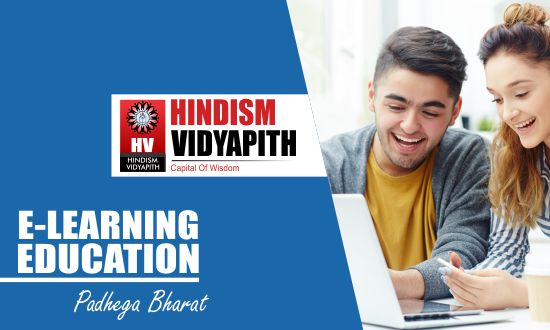Education Modes
Different Education Modes at Hindism Vidyapith.
Students who would like to attend classes in regular mode and attend practical classes can join the vocational programmes in regular mode. The classes will be conducted systematically by expert faculties who have several years of experience. 75% attendance is required to attend exams.
The Examination will be conducted systematically in written format and invigilators will inspect the Examination hall. Practical Examination will be conducted as per council norms. An assignment submission and viva voce examination will be conducted to test the subject knowledge of the students through Qualified Experts. For assignment and viva voce separate marks will be allotted. At the end of the programme a Project Work needs to be submitted illustrating the scope of his/ her subject. Again marks will be allotted for Project Work.Students who do not appear for all examinations will be marked absent. Results will be announced in 30-45 days from the date of completion of examination Certificates will be awarded based on whether the student has passed the exam or not. Regular Certificate will be awarded for the students who pass the exams in Regular Mode.


Directorate of Distance Learning (DDL) is a part of HindismVidyapith and is committed to provide quality vocational education through Distance Mode. Understanding the characteristics of successful distance learners is necessary to help identify strategies that are highly effective for a successful distance learning experience. It will be important to determine if learning occurs differently via distance. It is necessary to identify processes teachers use to customize the learning experience and assess innovative instructional processes to identify which best help students learn. It’s important to diagnose problems that learners encounter in terms of time and place, along with how the required use of technology affects their motivation. It is also important to determine student expectations for credit courses and why they do not take advantage of distance learning opportunities. It is more important to determine expectations for professional improvement than it is to determine expectations for personal enrichment. It will be important to determine participation and completion rates and assess outcomes of vocational education through Distance Mode.
Directorate of Distance Learning will take necessary steps to evolve strategies to promote vocational education through Distance Mode and take steps to make it a life-long process of learning system.
All the Vocational Education courses are One Year Certificate Courses. Exams will be conducted in non-semester mode in the prescribed format. The Examination will be conducted in the written format and once the student passes the exam the certificate will be issued mentioning that the student has passed through Distance Mode.
E-learning or electronic learning, and typically this means using a computer to send information of the course whether it's in ainstitution, part of your mandatory business training or a full distance learning course. In other words using any electronic technology to assist in the gaining and expansion of information and understanding in order to be sure and absolutely confirmed
There are many terms used to explain learning that is carried online, using the internet, from computerized electronic learning to distance education, internet learning, online learning etc. We can classify E-Learning as courses that are exclusively delivered through the internet to places other than the classroom where the professor is giving lessons.
E-learning includes in itself technology-enhanced learning (TEL), computer-based instruction (CBI), computer managed instruction, computer-based training (CBT), computer-assisted instruction or computer-aided instruction (CAI), internet-based training (IBT), flexible learning, web-based training (WBT), online education, virtual education, virtual learning environments (VLE), etc.
It is interactive in a way that you can correspond with your professors or fellow students. A teacher or professor is always present to answer your queries, grading your participation, assignments and tests. Sometimes the lectures are delivered live; where you can “electronically” raise your hand and work together at a fixed time. Sometimes it is a lecture that has been already recorded.
E-learning can be network-based, Internet-based or CD-ROM-based. It can include text, video, audio, animation and virtual environments. E-Learning is one of the thrust area identified by Ministry of Electronics and Information Technology (MeitY) for imparting education using educational tools and communication media. It is the learning facilitated and supported by Information Communication technologies (ICT). The broad objective is to develop tools and technologies to promote e-learning.
The government has supported various e-learning programs and the Department of Electronics and Information Technology (DeitY) has been actively developing tools and technologies to promote it. DeitY has supported e-learning-focused R&D projects at various academic educational institutes. These include content development, R&D/technology initiatives, HRD projects and faculty training initiatives to improve literacy through distance education.
With the number of internet users in India expected to reach 250 million, India’s potential as a huge market for e-learning is huge. A large number of new uses are accessing the internet from their smartphones and tablets.
